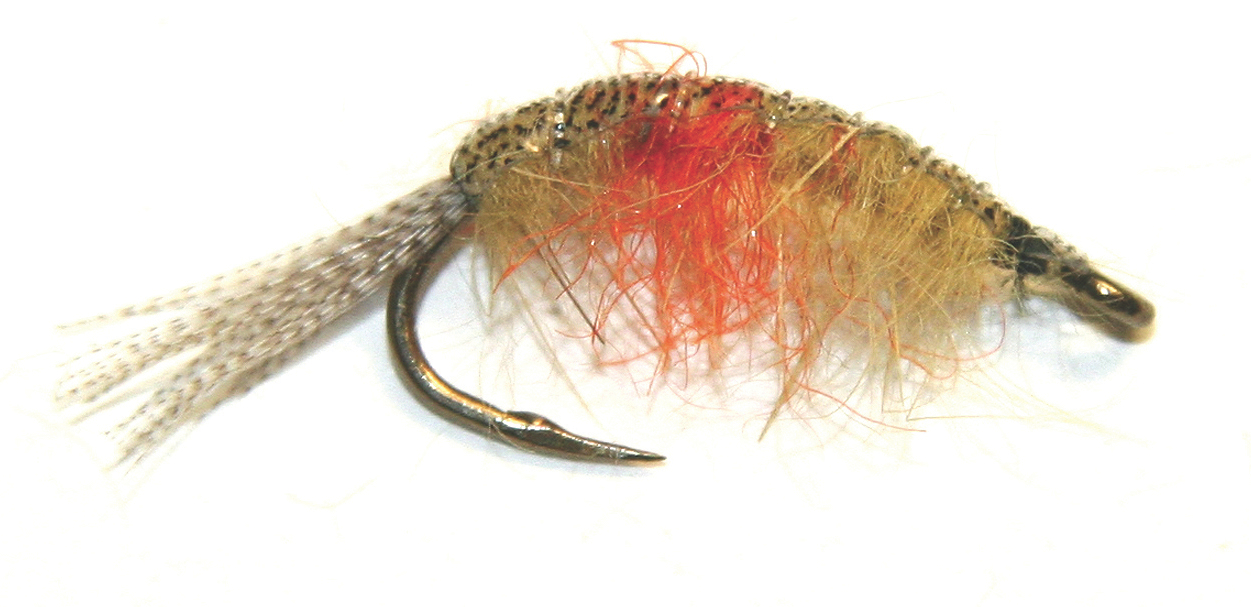Advertisement
Suppose I told you there exists a small aquatic invertebrate that often makes up a significant percentage of a trout’s diet, and that it’s easy to imitate at the vise and fish? Additionally, this wondrous trout bait shuns the complicated metamorphoses of mayflies and their ilk, and lives year-round in both still- and moving water, sometimes in extraordinary numbers. Sounds too good to be true, right? Fellow anglers, allow me to introduce the humble scud.
Unlike the missile of the same name, these wee crustaceans are much more productive than destructive. Also called freshwater shrimp or side swimmers, scuds are an important food source for trout, yet anglers often overlook them, perhaps because they lack the intriguing life cycle and delicate beauty of other classic trout fare. But as Tom Rosenbauer wrote in his seminal Prospecting for Trout, “Crustaceans are easy to capture and high in protein and fat. Wherever they are found in great numbers, you will find lots of corpulent trout.”
Advertisement
Sold on scuds? Here’s what you need to know to start fishing them.
Where to fish scuds
Scuds can live in a wide variety of rivers and lakes, but their best habitat is clean, cold, unpolluted waters. They’re often found fairly shallow, and in and around weeds, but they’ll also live in both rocky riffles and slower, silt-bottomed areas. The tailwaters below dams are often prime scud territory, due to the stable water levels and temperatures, which encourage weed growth. I’ve also had success fishing scuds in ponds and reservoirs.
Advertisement
When to fish scuds
Sometimes, trout get tunnel vision and target a very specific emerging insect or other food source. But any time you don’t see obvious, easy-to-read activity, the fish are likely feeding opportunistically—and that makes scuds a viable option. Otherwise, their importance as a food source increases both early and late in the season, when other insects aren’t around. Scuds are most active in low light, such as during the shoulder hours or when it’s overcast. They can also be knocked loose from their weedy homes by high or disturbed water. Still, there’s no need to feel constrained by these general trends.
Advertisement
What pattern to fish
Scuds range in length from one-quarter to three-quarters of an inch, getting larger later in the season. And they show up in an assortment of earthy colours, from olive to grey to orange. Specific scud patterns imitate the crustacean’s smooth, segmented back, long antennae, whack of tiny legs and crescent shape.
But entomological exactitude is less important than a fly in sizes 12 to 16 that approximates the shape and looks generically buggy and lifelike. In fact, you’ve probably already caught fish that mistook a Pheasant Tail, Hare’s Ear Nymph or caddis larva pattern for a scud. Any of those flies will do in a pinch when the scud bite is on.
How to fish scuds
For practical purposes, think of scuds as nymphs. They swim, but not well enough to negotiate current, so in moving water, dead drift them near the bottom. Depending on the depth and speed, a variety of methods can be effective, including Czech nymphing, high-sticking and basic nymph-and-strike-indicator fishing. In stillwater, let the fly sink to the bottom, then retrieve it with a slow hand-twist retrieve. When you’re fishing several nymphs together, scuds are also a good choice for the point fly.
Ultimately, the scud fly is not a magic bullet, but it is a reliable go-to option that should be part of every fly angler’s arsenal. And of course, when casting to fish that have seen a lot of flies, it never hurts to use something a little different. Scuds exist. Spread the word—just not too far.

